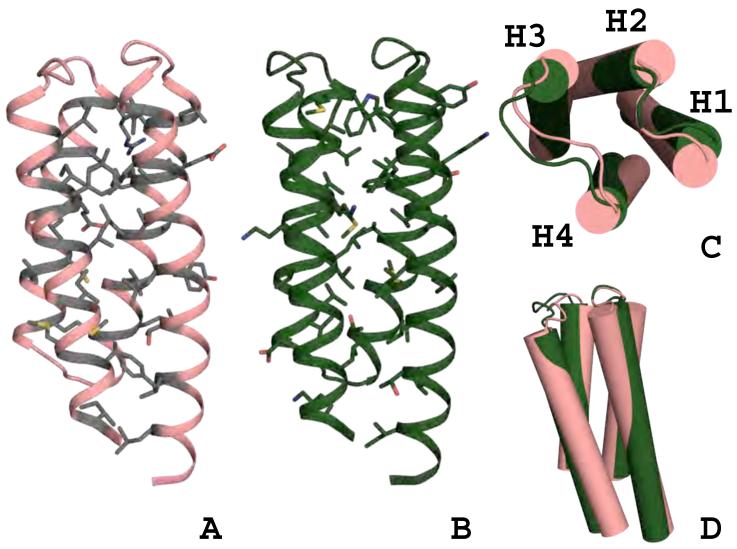Figure 1.
Global comparison of the wild-type template and DRNN design model.
Thirty-eight design positions shown as grey sticks were identified in the wild-type template (A). The final design model for DRNN with the designed positions shown as green sticks (B). DRNN’s backbone and helix crossing angles have been subtly changed by the flexible backbone design procedure (C and D). The helices are labeled H1-H4 in panel C. Panels A, B, and D are in the same orientation and panel C is a top down view of the bundle.

